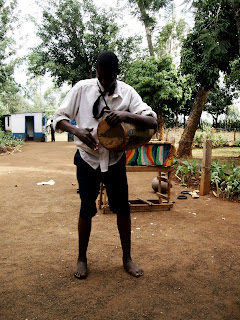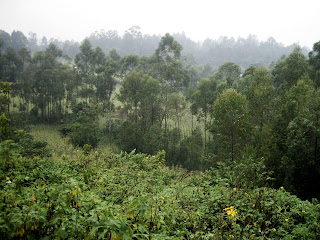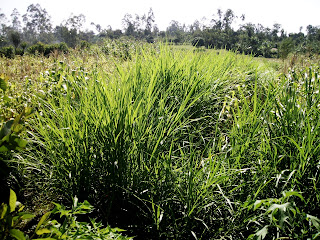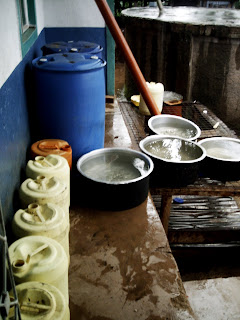The day started off like any other day. I was making classroom observations of science lessons. In one class the students seemed very engaged in their lesson about animal parasites and the prevention of them in domesticated animals. I even learned a couple of new things about a nasty parasite called a "liver fluke."
[By the way, I'm one week away from completing Phase 1 of my project, at which time I will make several postings about my findings in the classroom.]
I enjoyed watching the children learn and ask all of their questions about how to prevent these parasites. One girl even asked if the same parasites infected animals in other parts of the world. The teacher looked somewhat surprised by the question, but he just smiled and stated, "Yes, some parasites are common in other parts of the world, while others are unique to this country."
I couldn't help but think that the murals on the walls of the school, commissioned by the Kijana organization (whom I work for) may have helped to motivate this student's question. All over the school grounds the walls are covered with paintings of maps to help the children to understand that Kenya is just one part of a much larger world.
Here's one of the continent of Africa. (notice the Kijana logo on the left-hand side)
And here's one of a world map. I wonder how many times students pass these murals in a day? It's essentially the same sort of education that American children get by watching commercials all the time. [Constant bombardment of images leads to some form of education about that subject matter.]
After class I got to take a longer break than usual because of the scheduling of science lessons that day. So I decided to take a tour of the campus.
I saw the field that the students use for gym class...
and their recess area after lunch.
After my stroll around the school I was informed that the last
science class that I was supposed to observe had been canceled
because the teacher had to leave early. I was a little sad about this
But to my surprise, the head teacher called me outside where I saw the students assembling these instruments.
Apparently, the students were preparing to go to a yearly
competition at a Kenyan music festival. I was informed that in
previous years the students had made it to national, and the head
teacher stated, "There's no reason why we can't make it there
again!"
And once they had everything
set UP, they started to GET
DOWN!
Their music was amazing to say the least! From the time they began playing I had tears in my eyes, because they were so talented at such a young age. All the teachers and students watching had to start dancing because the rhythm was just that melodic.
The students played about 8 songs for me complete with
choreographed movements!
My favorite part of the entire
performance was a drum
selection played by four young
men from the school.
There were also a collection of solo performances by the students.
Complete with some familiar instruments like this West-African hand drum...
And this strange instrument (I forgot the name) which sounds similar to a violin, but is played like a guitar.
There were even unconventional instruments like this student who was playing...a pot!?!
This guy particularly stole the show in my opinion with his awesome skills on the xylophone (or marimba as it is called in Africa).
Here is a panoramic picture of everyone playing together. It was a little overwhelming to see such a large group of young children in such perfect harmony.
After the amazing performance, which lasted nearly an hour, the principal brought out the uniforms that the students would be wearing for their performance. The boys were a little surprised to find out that EVERYONE would be wearing traditional Kenyan dance attire, which included skirts!
The entire school (which had gathered in the courtyard to watch the children play) was laughing as the boys tried on the clothing. The boys didn't seem too happy about this.
As a motor bike (oops, I mean a "vehicle"...) arrived to pick me up, this was the last picture I took of the children saying goodbye to me. What an awesome experience!




























































